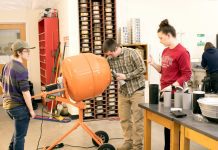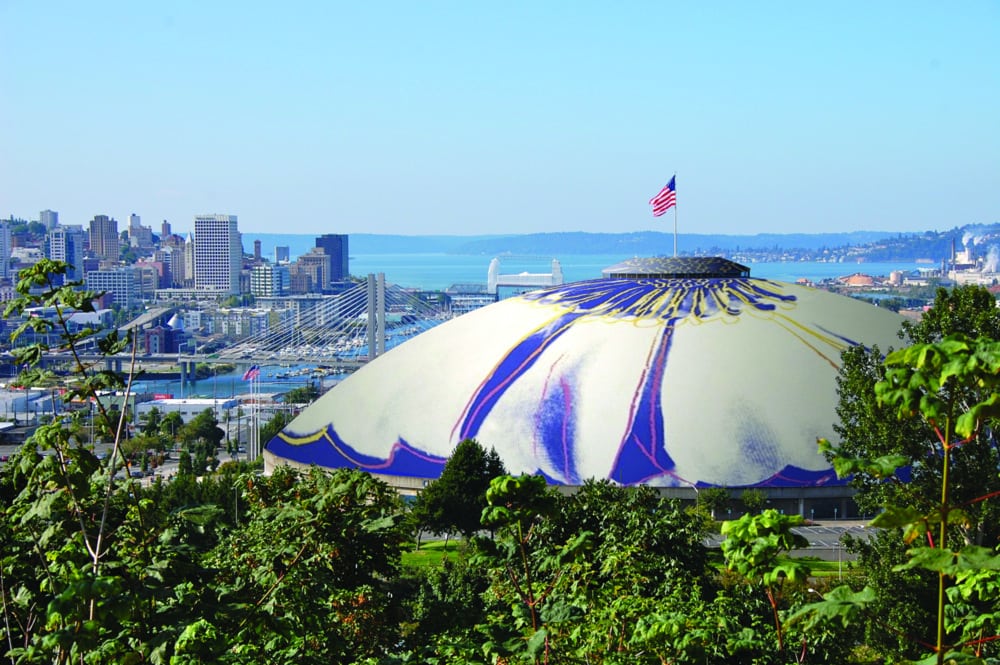In 2018, the Tacoma Dome is celebrating its 35th birthday with a massive facelift to remain attractive to national concert and event promoters. The renovations come with a price tag of $30 million – about what the Tacoma Dome cost to build in 1985.
 The Dome will be closed through the summer to allow crews to replace the current seats with telescoping seating. The new seating will provide greater comfort for guests and faster reconfigurations between events. Crews will also renovate and add more restrooms. Other renovations include improving the loading docks to accommodate larger shows, upgrading the façade and adding security features. The heating and air conditioning systems, lighting and sound systems will also get significant upgrades as well. Expect new food and beverage locations under the Dome’s wooden roof.
The Dome will be closed through the summer to allow crews to replace the current seats with telescoping seating. The new seating will provide greater comfort for guests and faster reconfigurations between events. Crews will also renovate and add more restrooms. Other renovations include improving the loading docks to accommodate larger shows, upgrading the façade and adding security features. The heating and air conditioning systems, lighting and sound systems will also get significant upgrades as well. Expect new food and beverage locations under the Dome’s wooden roof.
“Everyone we meet has a ‘Dome story’ to tell. Whether they played football here, attended their first concert, met their significant other, graduated with classmates or established traditions at annual events with their families, the arena has provided a gathering place for memorable moments for so many,” said Kim Bedier, Director for Tacoma Venues & Events.
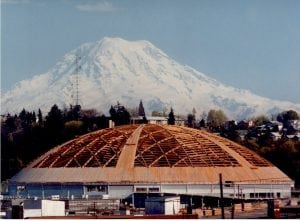
“With the support of the community and in alignment with Tacoma’s Vision 2025, this infrastructure investment ensures that the Tacoma Dome will continue to be viable, attract world-class touring entertainment and contribute positively to the economic impact and Tacoma community pride for years to come.”
The Dome has been a landmark for Tacomans for more than a generation, so it is difficult to think of a time when the city was not home to the state’s largest indoor arena that now welcomes more than half million visitors a year.
In the years before the Dome was built, the city was hurting. Its downtown was largely vacant as residents moved to the suburbs and anchor stores moved to the Tacoma Mall after it opened in 1965. Building investors had bought up many downtown buildings, raising rents along the way, which killed off most of the businesses that tried to struggle onward.
“It was horrible,” LeRoy Jewelers owner Steph Farber said of those days. “It was empty. We were the only ones on our block. The city has come a long way.”
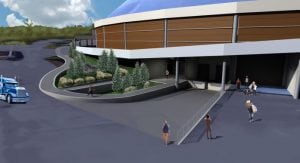
But things were starting to happen, Farber said, starting with the community effort in 1978 to renovate the ailing Roxy movie theater into the Pantages Theater as a way to draw people downtown.
“People had that feeling of ‘yes we can,” Farber said. “It was the burst of enthusiasm.”
That spark drove the “Dome of Our Own” campaign to build a concert and event venue in Tacoma. Voters approved a bond package of $27 million to create the Dome with an overwhelming 70 percent of the ballots in May 1980. It was seen as a community effort, with lumber coming from the lumber giant Weyerhaeuser, which was headquartered in Tacoma at the time.
But the Dome didn’t open without controversy. It’s still located in Tacoma, after all. The focus of most of the ire in its early years was the artwork selected to decorate the outside of the structure, in what historian Michael Sullivan dubbed the “Neon Wars.”
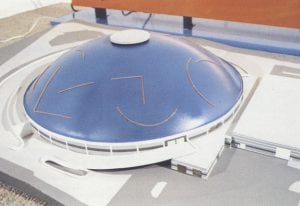
It didn’t sit well with many Tacomans that an out-of-state panel of artsy folks was commissioned to select the art for the dome local taxpayers funded. The city had largely banned neon lights in businesses and bars at the time. And, yes, you guessed it. The panel chose a massive neon sculpture by Stephen Antonakos that would be essentially bolted to the roof of the Dome.
The arguments over the idea that neon couldn’t appear in tavern windows, but could splash atop the city’s signature landmark created a cultural war that flooded city council meetings and even a recall effort.
“There was a clash of cultures going on,” Farber said.
Antonakos’ dome topper never happened. The city ended its one percent funding of new construction for public art, and the blue mountain design went up. But that could change.
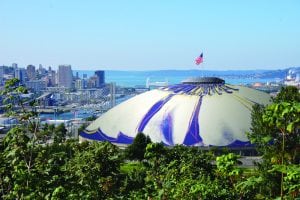
An effort started two years ago to raise $5 million to pay for the installation of a long-forgotten design for the Dome that had been submitted by pop artist Andy Warhol. His design was a quickly drawn flower that now is on display at the Convention Center.
Warhol’s flower design got rejected in 1982, Farber said, because it wasn’t seen as a legitimate proposal.
“He was still around,” Farber said. “So it was okay to show distain for him. No one thought he was really serious.”
Warhol has become a pop art icon since his death in 1987, however, and his “flower for the Tacoma Dome” appears on mugs and tote bags, but not on the Dome where he wanted to paint it. And it might never happen since the effort to raise money have largely stalled since getting official approval from the city to explore the idea.








